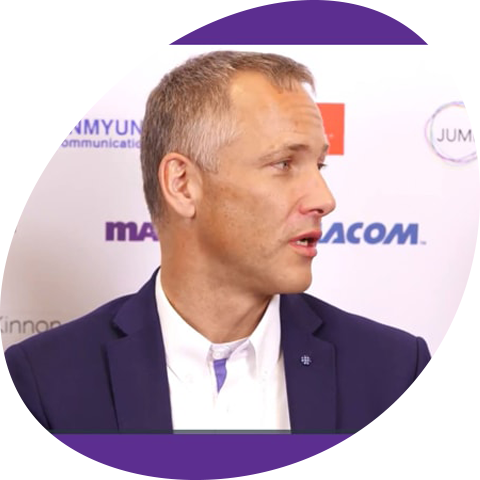As more media organisations examine the merits and challenges of migrating their broadcast playout operations to IP and virtualized deployments, we’ve seen an exponential growth in the sheer variety of POCs and RFPs, and in the scope of requirements they contain. Broadcasters are looking for clarity in this time of change, asking questions such as:
“Should we be uncompressed or compressed?”
“Can we use a public or private cloud?”
“We can’t just throw all this SDI equipment out! How do we expand and future proof our investment?”
“Can we have both SDI and IP?”
“How can we handle the needs of live broadcasts in this new IP World?”
“Which decision is the most fiscally responsible for our business while allowing us to evolve?”
“This IP stuff is expensive. Is it going to be worth it?”
There is, of course, no single right answer to any of these. Every broadcast playout workflow is unique, so properly supporting any broadcaster’s needs requires agile software development, a collaborative approach for the lifetime of the project and, crucially, an experienced engineering and deployment team.
Here at Pebble Beach Systems, we have that experience in spades. We’ve worked on some truly ground-breaking installations—each one different from the other—and each with a new set of requirements. So here’s a look at some of the challenges we’ve helped our customers resolve.
Virtualised Playout for a large European Service Provider
In 2015, this customer started a project to evaluate the feasibility of virtualisation. This was quite early on in the history of virtualised playout – most broadcasters weren’t even talking about it back then – but their customers were moving towards much shorter one or two-year playout contracts, and they needed a more agile playout infrastructure to cope with this level of churn. The lease on their building was coming to an end, so they made the decision to move out of their specialist broadcast facility into a standard office building and to host the playout of around 90 channels in a remote data centre. The challenge was to do away with SDI, dramatically scale back running costs, and find a partner willing and able to go on this journey with them. Having tested a number of compressed IP-based playout solutions, Pebble Beach Systems was selected, with a solution featuring Marina automation controlling our Orca integrated channel technology.
The system has now been on air since 2017 and comprises a total of 240 virtual machines, playing out 90 channels to air, all protected with 1+1 channel redundancy. The 180 Orca channels in the data centre support transport streams for live input and output, and NDI for low latency monitoring. Operators in the office building which hosts the control room use a combination of our Lighthouse web clients and Marina clients for monitoring and control, and each of the Orca channels can be configured in software to meet the processing requirements of each channel.
This customer reduced their equipment foot print from 160 racks on premises to just 40 racks in the data centre, and in reducing the amount of hardware they were therefore able to reduce power consumption by 66% compared to their old playout system.
Hybrid SDI and IP Playout for a Major Worldwide Business and Finance News Network
This customer was moving to a new location in the heart of London, presenting an opportunity to refresh their broadcast technology and showcase the latest IP technologies. Their 7 financial news channels (including 2 web streaming channels) needed to support fast turnaround workflows and be remotely controlled from New York production facilities when the US markets were open. Knowing that IP would be the future, the goal was to have as little SDI infrastructure as possible, even though the SMPTE ST-2022-6 standard was still in its infancy.
Following a rigorous evaluation process involving a detailed proof of concept, Pebble was awarded the contract to supply a playout solution featuring Marina automation controlling 14 Dolphin integrated playout channels (7+7) and 64 Dolphin ingest and review channels.
Each of the playout channels can select from one of four inputs for live pass through (this would be the local feed for EMEA, USA or APAC, plus a spare, or they can playout pre-recorded content form either local or network storage.) They support a hybrid mix of either 2022-6 or SDI for video input and output.
Building a bridge between SDI and IP is the kind of flexibility that truly sets Pebble apart. For instance, Pebble has recently announced support for the Vizrt engine running on our servers. At the time, our customer wanted to continue to use their existing Vizrt engine, so it was able to connect directly using SDI. They are making heavy use of our Lighthouse remote monitoring and management system in their MCR, with touch screens in the control rooms which render an HTML5 page from Lighthouse, including a Smart Panel customisable UI. We also enable the control of automation systems across all their worldwide geographies to automate regional channels for their “follow the sun” operation.
Business Continuity Operation for fully synchronized Disaster Recovery in the Private Cloud
An existing Pebble customer came to us with a requirement to set up an IP-based Disaster Recovery system outside their base in the Middle East. Their playout centre has a traditional playout system using Marina automation, video servers, master control switchers and graphics, but this requirement was for a business continuity center, rather than a pure DR system, which functioned just as well as their main site.
The solution we architected enables the operator at the broadcast centre in the Middle East to continue to play out their channels with Marina automation controlling traditional devices (SDI), whilst everything is synchronised across to the new European DR facility 24/7, where a virtualised deployment of Marina controls Orca devices running in a private cloud. Since the system implementation started in 2017 additional features have been rolled out which handle live sources, run 3D graphics with a best-of-breed graphics plugin, and add capacity to support all 23 of their channels. Monitoring is done through the Lighthouse application which enables the staff to have a view across both systems. They can move seamlessly between the main and backup site.
This Business Continuity deployment has replaced an expensive third-party DR service and brings that function ‘virtually’ in house, delivering highly significant ongoing cost savings.
Playout for the largest Uncompressed IP Project in Europe
Pebble was awarded the contract for this new greenfield site at the end of last year. Obviously, IP standards have moved on since earlier deployments, and this broadcaster is building an all-IP facility utilising SMPTE ST-2110 technology to its full potential. (Among other things, 2110 splits up video/audio/aux signals for much greater capacity and efficiency compared to 2022-6). The 4 channel playout solution which Pebble is providing features Marina and Dolphin, and one of the key requirements was to use as many open standards as possible, so the project makes heavy use of the new NMOS specs including IS-04, IS-05, IS-07 (Pebble chairs the IS-07 initiative) and IS-09. When complete, the facility will be all HD with the ability to upgrade to UHD when the outbound infrastructure supports it. The solution includes the new Viz Engine plugin which run directly in our Dolphin integrated channel device, reducing costs, complexity and rackspace for the end user.
Interestingly, the project includes a high level of audio processing. Whilst SDI is limited to 16 tracks of audio, 2110 manages multiple audio flows much more efficiently, with 1 to 64 tracks in a given audio flow. This user will be one of the first playout customers to use 2110 to its full potential, with multiple audios and multiple auxiliaries.
If you’ve read this far, I hope these examples were useful to you to illustrate the breadth and depth of installations Pebble has been part of. After all, we’re not just paying lip service, we’ve literally been there and done that! Give us a call so we can help you do it too!





